Stephan Huckemann
Perfect Fingerprint Orientation Fields by Locally Adaptive Global Models
Jun 20, 2016

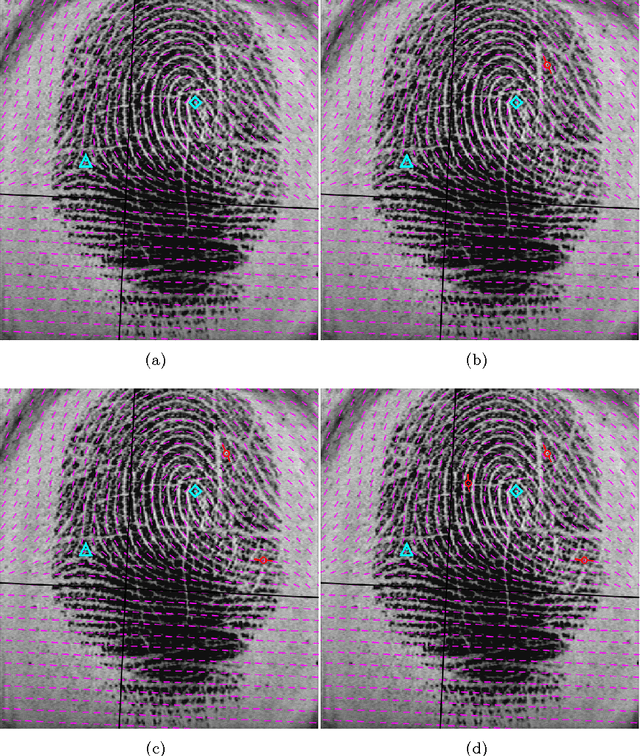

Abstract:Fingerprint recognition is widely used for verification and identification in many commercial, governmental and forensic applications. The orientation field (OF) plays an important role at various processing stages in fingerprint recognition systems. OFs are used for image enhancement, fingerprint alignment, for fingerprint liveness detection, fingerprint alteration detection and fingerprint matching. In this paper, a novel approach is presented to globally model an OF combined with locally adaptive methods. We show that this model adapts perfectly to the 'true OF' in the limit. This perfect OF is described by a small number of parameters with straightforward geometric interpretation. Applications are manifold: Quick expert marking of very poor quality (for instance latent) OFs, high fidelity low parameter OF compression and a direct road to ground truth OFs markings for large databases, say. In this contribution we describe an algorithm to perfectly estimate OF parameters automatically or semi-automatically, depending on image quality, and we establish the main underlying claim of high fidelity low parameter OF compression.
The Filament Sensor for Near Real-Time Detection of Cytoskeletal Fiber Structures
Jul 14, 2015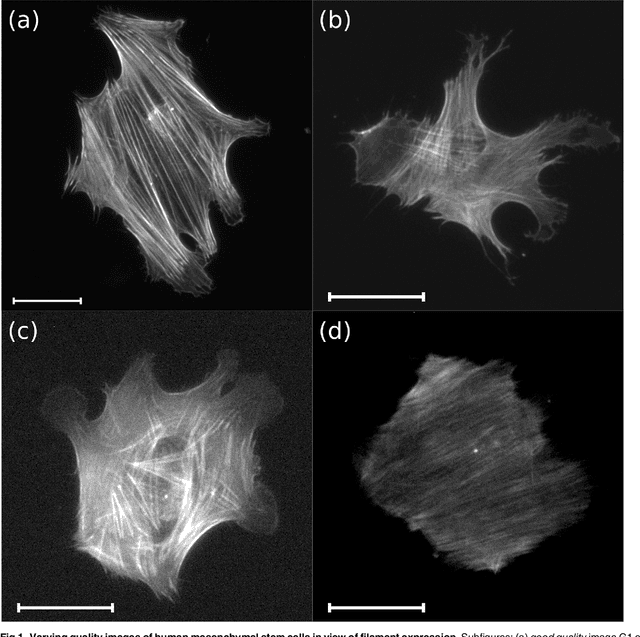

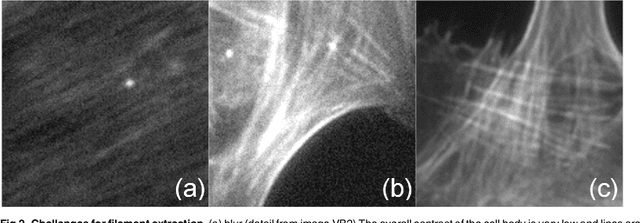
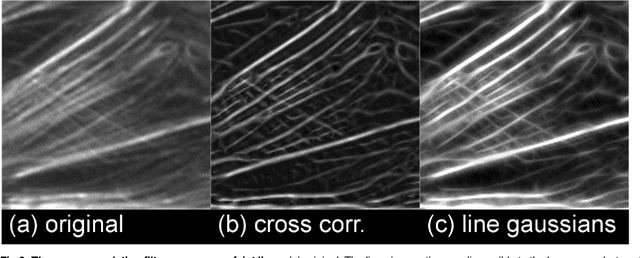
Abstract:A reliable extraction of filament data from microscopic images is of high interest in the analysis of acto-myosin structures as early morphological markers in mechanically guided differentiation of human mesenchymal stem cells and the understanding of the underlying fiber arrangement processes. In this paper, we propose the filament sensor (FS), a fast and robust processing sequence which detects and records location, orientation, length and width for each single filament of an image, and thus allows for the above described analysis. The extraction of these features has previously not been possible with existing methods. We evaluate the performance of the proposed FS in terms of accuracy and speed in comparison to three existing methods with respect to their limited output. Further, we provide a benchmark dataset of real cell images along with filaments manually marked by a human expert as well as simulated benchmark images. The FS clearly outperforms existing methods in terms of computational runtime and filament extraction accuracy. The implementation of the FS and the benchmark database are available as open source.
* 32 pages, 21 figures
Filter Design and Performance Evaluation for Fingerprint Image Segmentation
Jan 09, 2015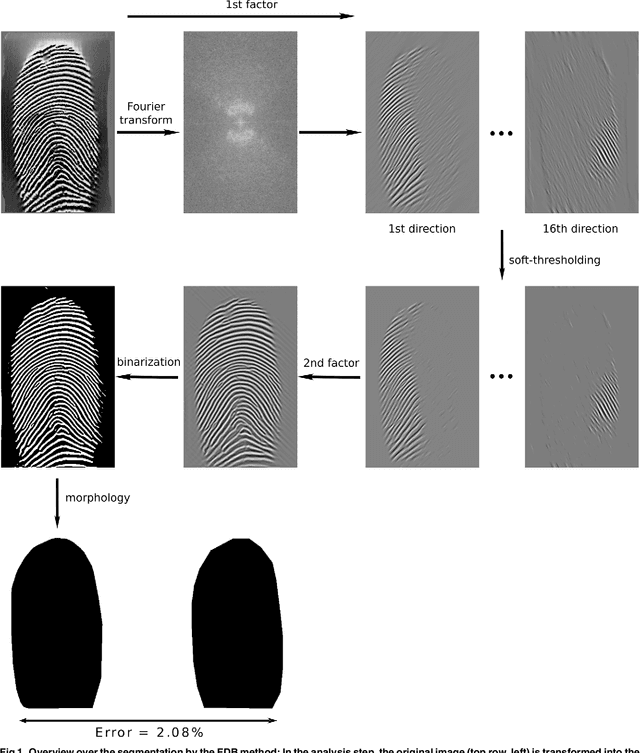
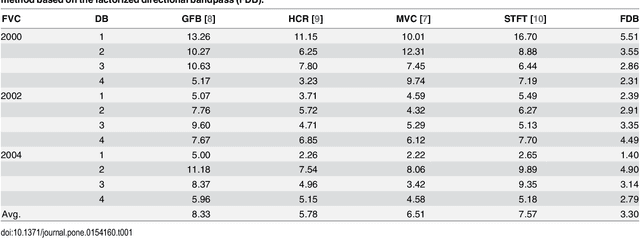
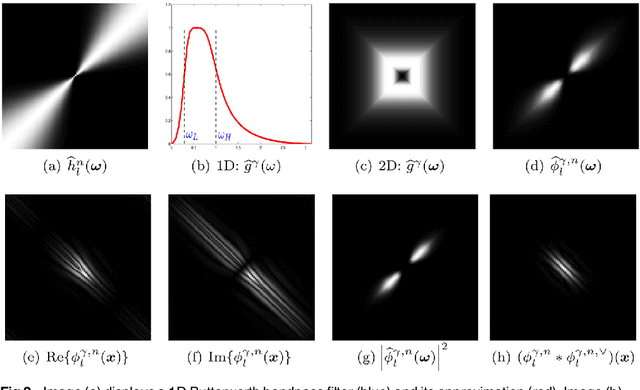
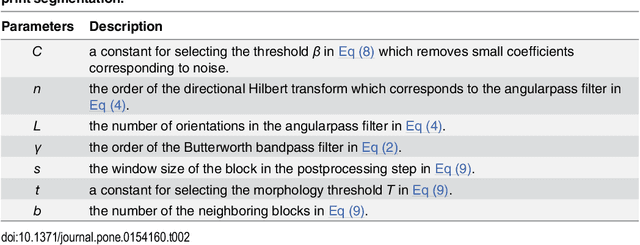
Abstract:Fingerprint recognition plays an important role in many commercial applications and is used by millions of people every day, e.g. for unlocking mobile phones. Fingerprint image segmentation is typically the first processing step of most fingerprint algorithms and it divides an image into foreground, the region of interest, and background. Two types of error can occur during this step which both have a negative impact on the recognition performance: 'true' foreground can be labeled as background and features like minutiae can be lost, or conversely 'true' background can be misclassified as foreground and spurious features can be introduced. The contribution of this paper is threefold: firstly, we propose a novel factorized directional bandpass (FDB) segmentation method for texture extraction based on the directional Hilbert transform of a Butterworth bandpass (DHBB) filter interwoven with soft-thresholding. Secondly, we provide a manually marked ground truth segmentation for 10560 images as an evaluation benchmark. Thirdly, we conduct a systematic performance comparison between the FDB method and four of the most often cited fingerprint segmentation algorithms showing that the FDB segmentation method clearly outperforms these four widely used methods. The benchmark and the implementation of the FDB method are made publicly available.
Separating the Real from the Synthetic: Minutiae Histograms as Fingerprints of Fingerprints
Oct 15, 2014



Abstract:In this study we show that by the current state-of-the-art synthetically generated fingerprints can easily be discriminated from real fingerprints. We propose a method based on second order extended minutiae histograms (MHs) which can distinguish between real and synthetic prints with very high accuracy. MHs provide a fixed-length feature vector for a fingerprint which are invariant under rotation and translation. This 'test of realness' can be applied to synthetic fingerprints produced by any method. In this work, tests are conducted on the 12 publicly available databases of FVC2000, FVC2002 and FVC2004 which are well established benchmarks for evaluating the performance of fingerprint recognition algorithms; 3 of these 12 databases consist of artificial fingerprints generated by the SFinGe software. Additionally, we evaluate the discriminative performance on a database of synthetic fingerprints generated by the software of Bicz versus real fingerprint images. We conclude with suggestions for the improvement of synthetic fingerprint generation.
 Add to Chrome
Add to Chrome Add to Firefox
Add to Firefox Add to Edge
Add to Edge